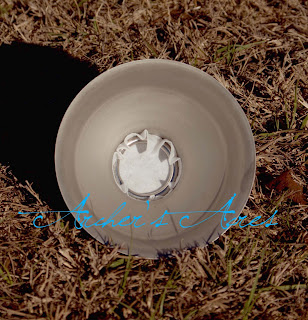We are a small farm located in the beautiful, historic small town of Waynesboro, Ga. We raise Nigerian Dwarves, KuneKune pigs and Ameraucana chickens. We also make handcrafted soaps.

Wednesday, January 30, 2013
Label Approved!
Raw Milk Sales
Please note the below label has the Guaranteed analysis for cows milk.
Goats Milk Guaranteed Analysis is as follows:
Crude Protein Min---3%
Crude Fat Min---3%
Crude Fiber Min--8%
Moisture 88%
Monday, January 21, 2013
Handmade Soap Giveaway!
I am going to give away 1 bar of my handmade Goat's milk, oatmeal and honey soap to one randomly chosen entry. The winner will receive 1 bar, postage paid.
The Winner will be chosen randomly on Feb. 1, 2013. All entries must be in by noon eastern time.
To enter: Leave a comment answering this question: What is your favorite barnyard animal?
To earn 3 additional entries, leave a separate comment for each of the completed tasks listed below. If you don’t leave separate comments for each task you’ve completed, your additional entries will not be included. Entries must be entered here, not on the Facebook Fan Page.
1. Become a fan of Archers Acres on Facebook.
2. Mention this give-away on Facebook with a link to this blog post or the Archer's Acres FB page..
3. Subscribe to Archer's Acres via email or rss feed.
This promotion is in no way sponsored, endorsed or administered by, or associated with, Facebook. You are providing your information to Archer's Acres and not to Facebook. The information you provide will only be used for this giveaway.
Equipment For Milking Your Goats
 |
| Milking Pail |
 |
| Strainer with Filter in Place |
 |
| Strainer with Filter in Place |
 |
| Strainer without Filter |
 |
| Fight Bac |
 |
| Strip Cup with Screen |
 |
| Milking Stand |
Friday, January 18, 2013
New Name, Same Farm
Monday, January 14, 2013
Goat Pasture
Building a New Goat Pasture
What we have done is used 6x6 square posts for the corners and to support the gate. We used 4x4 8ft long posts every 8ft to support the panels. The posts are all close to 2 ft in the ground and the hubs is going to cut them all off even to make it look nice. We used the cattle/hog panels for the actual fencing. We chose this type of fencing because goats are known to be difficult to keep penned up and this seems to be the best thing for keeping them in. I have a very young son so electic fencing was not an option and any of the other wire type fencing they seem to damage really easy, by either rubbing on it or standing on it and making it sag and loosen. This may be a little more expensive than the others but we feel it will last much longer and we thing it looks nicer as well. The panels we have are 16ft long and approximately 4.5 ft tall.
We used the wooden posts to hold the fence but along the back we used T-posts because that area is not going to be there permanently, we will be adding to the fence to make it eventually go all the way to the road so we didn't want to waste wood posts in an area that won't be there forever. The T-post do a great job at holding the fence up and you could build a fence using them but they don't look as nice so we only plan to use them during the construction phase.

Sunday, January 13, 2013
Kids Due in June!
Lori's Romeo
Tuesday, January 8, 2013
Soap Properties
Properties of my Soap Ingredients
Honey is known to have antimocrobial qualities and it is also a humectant, which means it attracts moisture to itself. Making it a great moisturizer and conditioner for your skin.
Oatmeal and its natural oil coat, moisturize, protect and gently cleanse, while correcting the pH of itchy or inflamed skin back to normal.
Goats Milk contains Alpha Hydroxy Acids which remove dead skin cells, leaving smoother younger looking skin. It is high in Vitamin A which helps reduce lines and wrinkles, control acne and give relief to psoriasis and eczema. It is moisturizing due to the fat content and contains many minerals such as selenium that are great for preventing and repairing damage to the skin from things like sun exposure.
Wednesday, January 2, 2013
Breeding Lori
Breeding my girl Lori
(a WHF Bently Hotwing son & Cadilak grandson)












